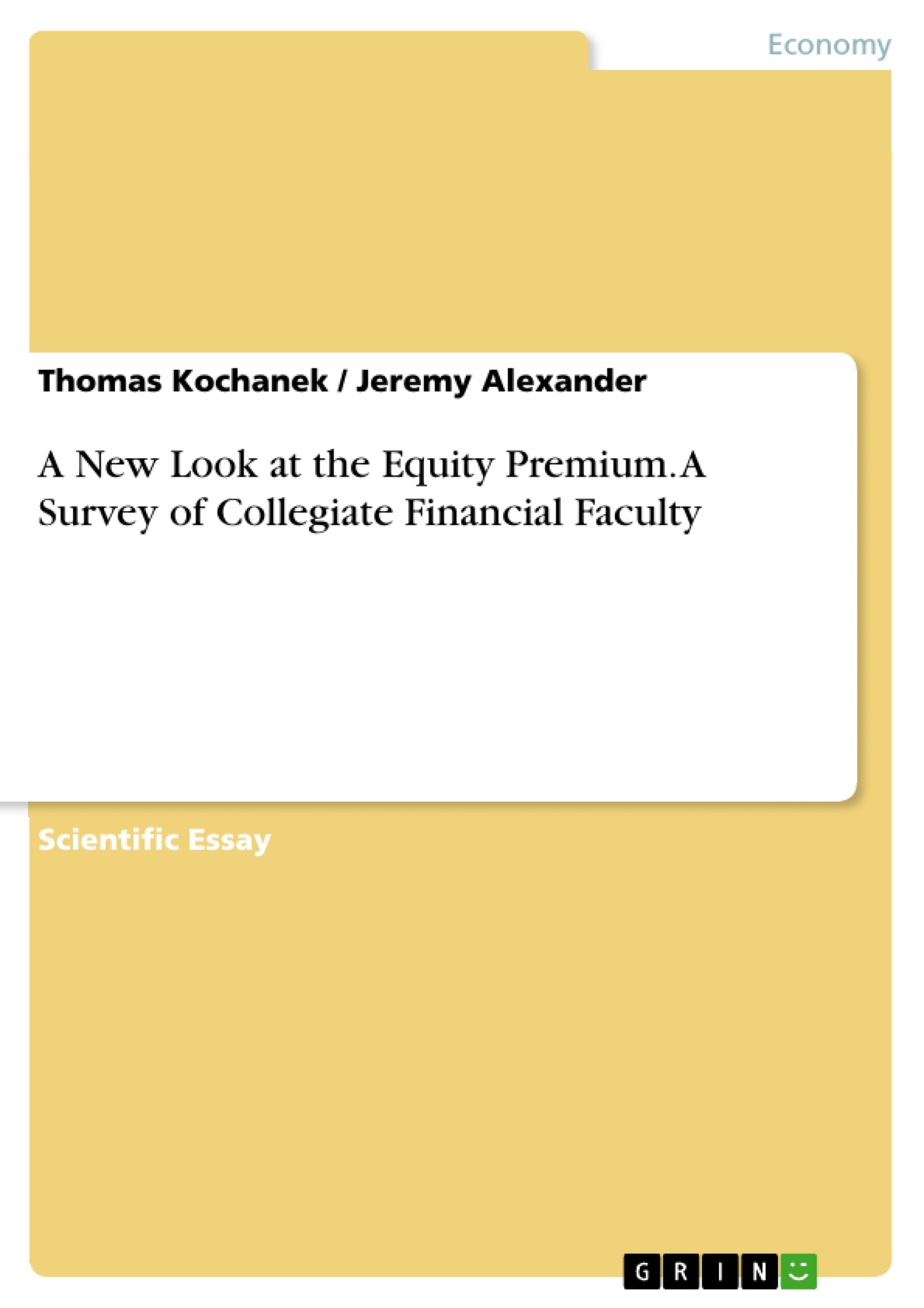This paper deals with the difference of potential returns of diverse assets within a long-term period. Recent articles investigated an unexplainable abnormality of long term returns of stocks in comparison to risk-free securities even if stocks were risk- adjusted. This phenomenon is called the Equity Premium Puzzle.
With this paper we want to investigate how current investors make use of the disclosures of these papers. Since one assumption of capital markets is that any information is available to any investor in the world, any investor who invests on a long term basis would act irrational if she invests within the bond market, while she could earn a lot more money in the stock market. Furthermore this fact of the existence of not rational acting investors might show that capital markets are not that efficient as expected or information among investors are not shared sufficiently through markets as an earlier study showed.
In our study we created a questionnaire of about 22 questions. All questions which were applied were held superficially, so that the respondent had no clue which goal we were looking for with that survey. We distributed our questionnaire to all available investors of all different ages. However we tried to focus on those investors with a long time investment horizon, such as students, pupils or early workers in the end 20’s or less. Since the Equity Premium Puzzle is not only a national issue, we did our survey not only in the United States of America but also in Germany.
Inhaltsverzeichnis (Table of Contents)
- The Paper
- Research
- The Equity Premium Puzzle
- The Source of the Equity Premium
- Habit Formation
Zielsetzung und Themenschwerpunkte (Objectives and Key Themes)
This paper aims to analyze the perspectives of finance professors regarding the equity premium puzzle, a phenomenon where stocks consistently outperform bonds over long periods, despite the higher risk associated with stocks. The study investigates the potential reasons for this phenomenon, exploring both historical data and current market conditions.
- The equity premium puzzle and its implications for investors
- The role of risk aversion and investor expectations in determining the equity premium
- The impact of market crashes and economic fluctuations on the equity premium
- The relationship between consumption patterns and the equity premium
- The potential influence of habit formation on investment decisions and the equity premium
Zusammenfassung der Kapitel (Chapter Summaries)
The paper begins by introducing the equity premium puzzle and outlining its significance in the financial world. The survey conducted among finance professors is then presented, highlighting the diverse perspectives and opinions regarding the phenomenon. The paper delves into the historical context of the equity premium, examining various studies that have attempted to quantify and explain its existence. Subsequently, the paper explores two prominent theories that attempt to explain the equity premium: utility in consumer consumption patterns and habit formation.
Schlüsselwörter (Keywords)
Equity premium puzzle, risk premium, investor expectations, market efficiency, consumption patterns, habit formation, risk aversion, asset pricing, financial markets.
- Citar trabajo
- Thomas Kochanek (Autor), Jeremy Alexander (Autor), 2007, A New Look at the Equity Premium. A Survey of Collegiate Financial Faculty, Múnich, GRIN Verlag, https://www.grin.com/document/118324
-

-

-

-
¡Carge sus propios textos! Gane dinero y un iPhone X. -

-
¡Carge sus propios textos! Gane dinero y un iPhone X. -

-
¡Carge sus propios textos! Gane dinero y un iPhone X. -

-
¡Carge sus propios textos! Gane dinero y un iPhone X. -

-
¡Carge sus propios textos! Gane dinero y un iPhone X. -

-
¡Carge sus propios textos! Gane dinero y un iPhone X. -

-
¡Carge sus propios textos! Gane dinero y un iPhone X.

